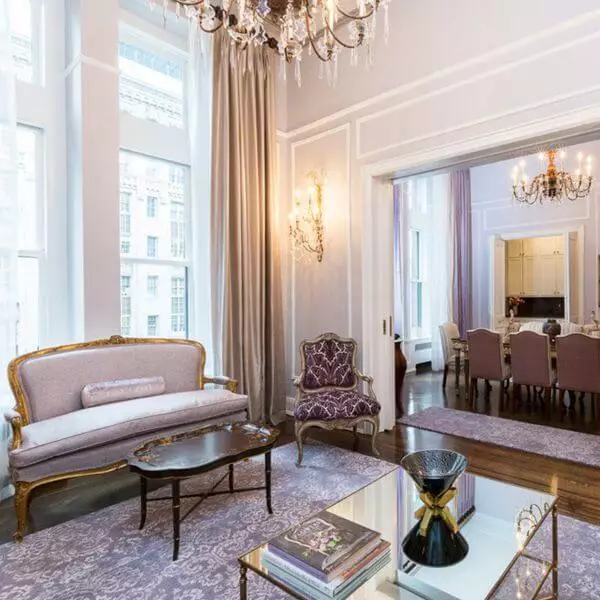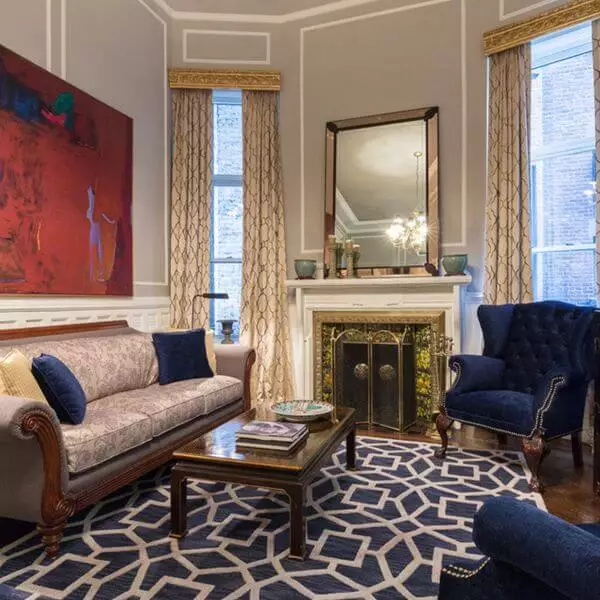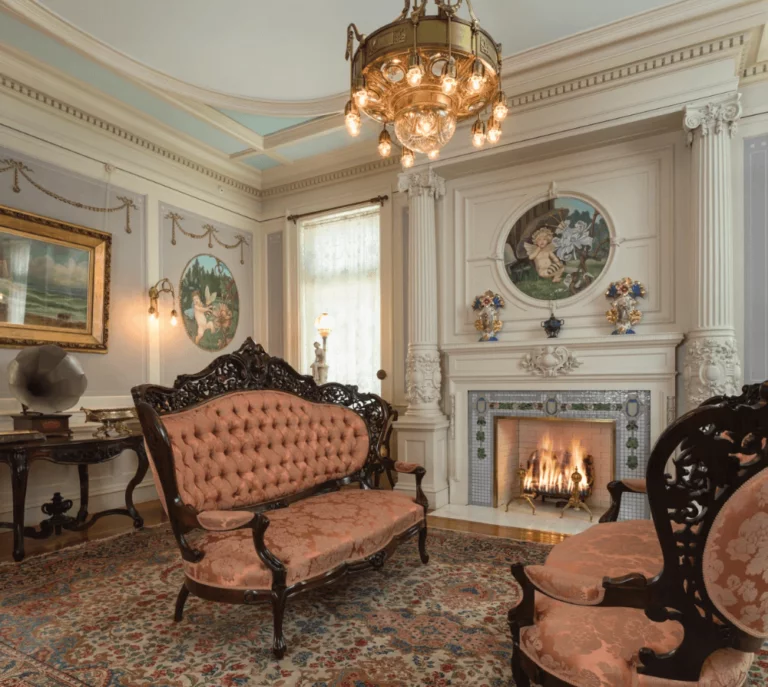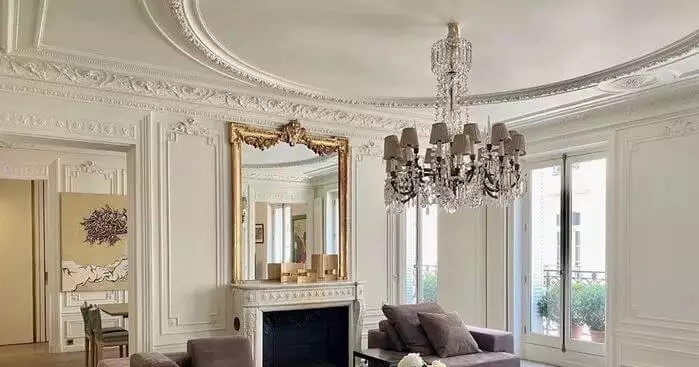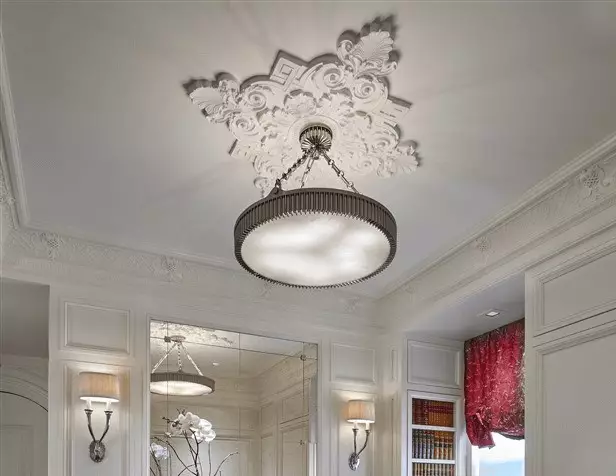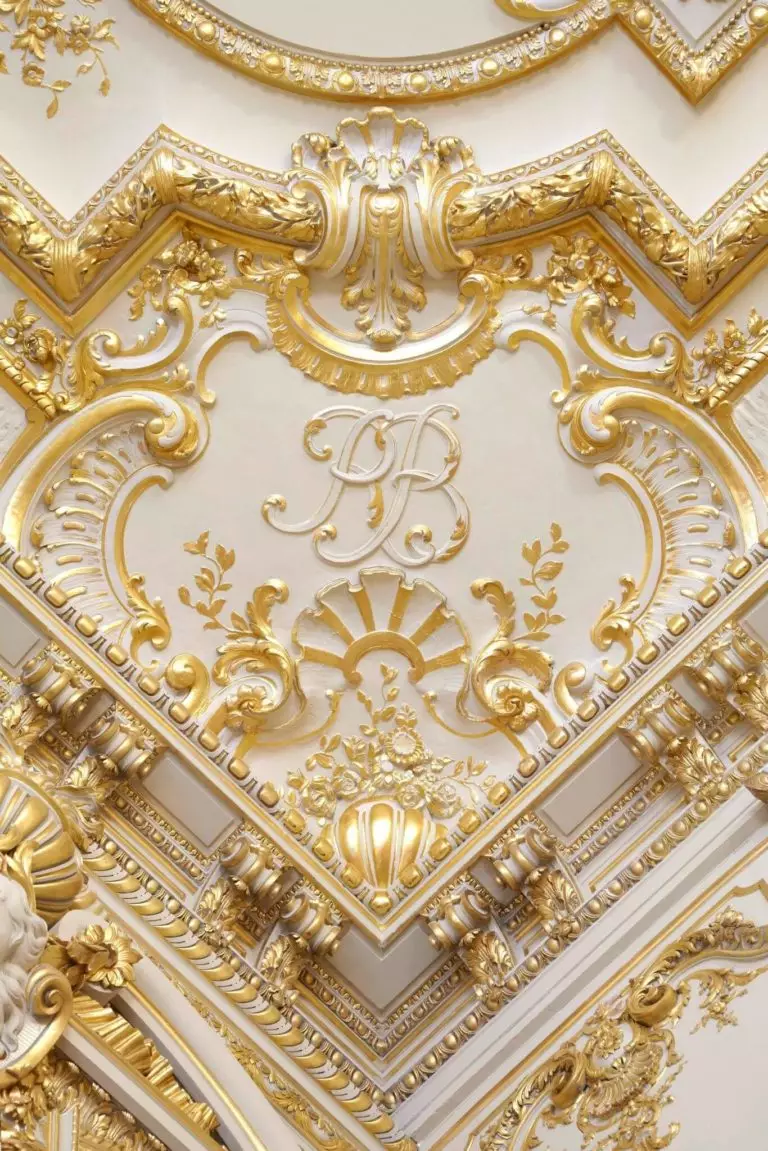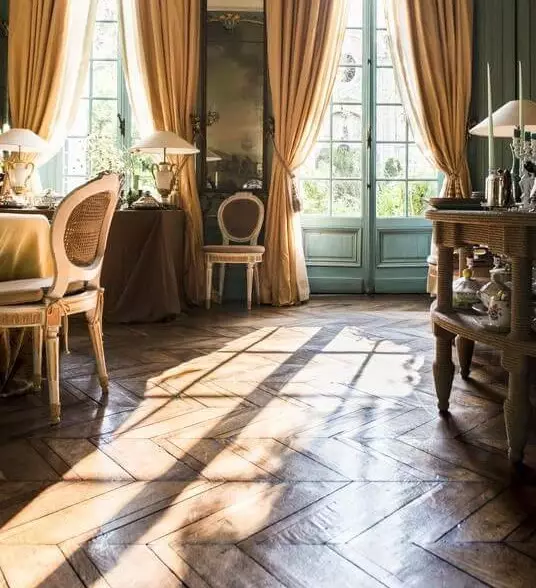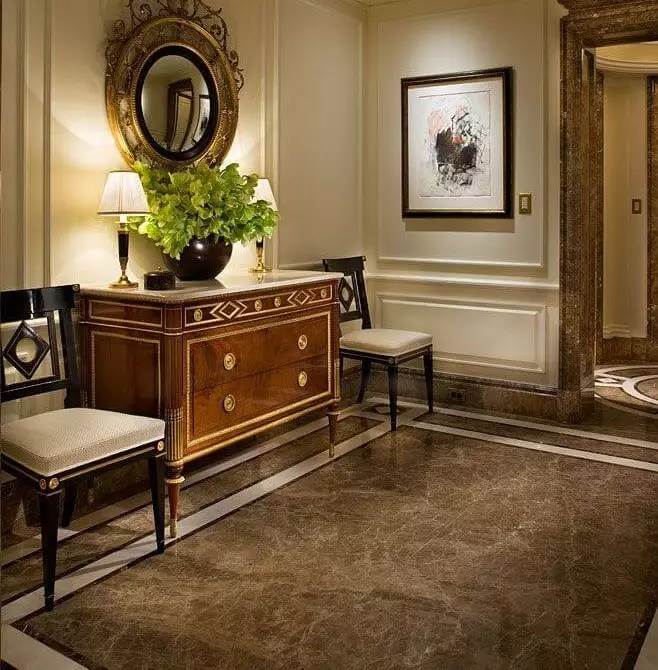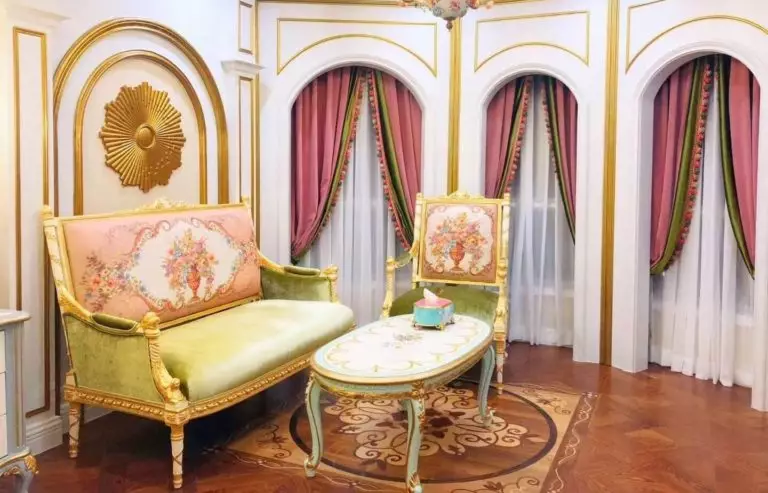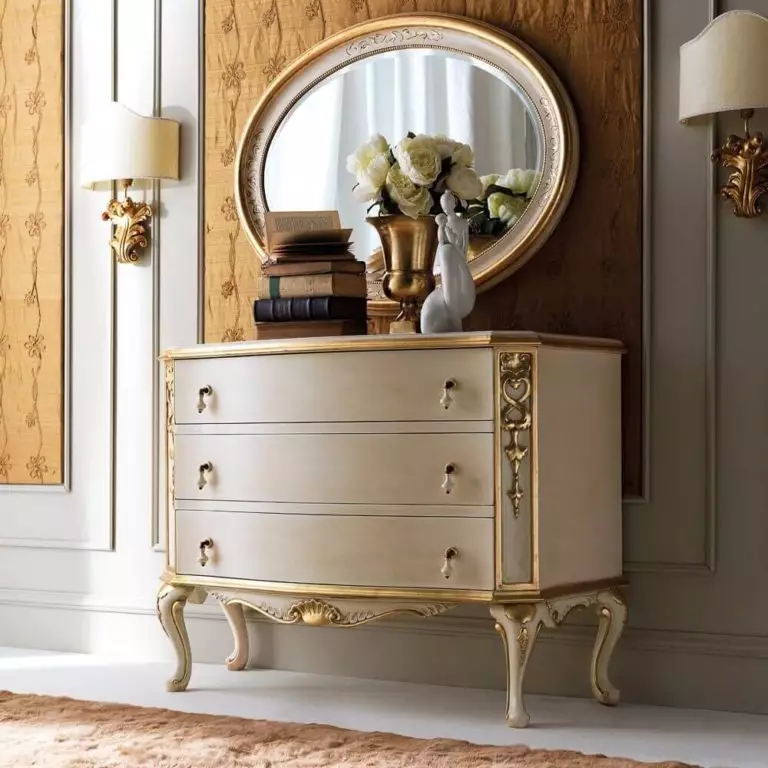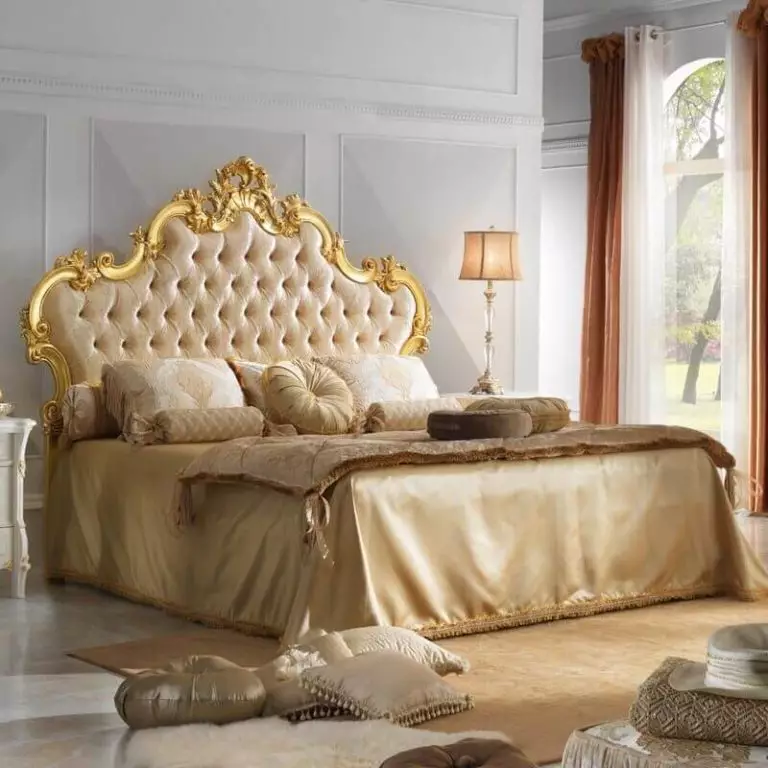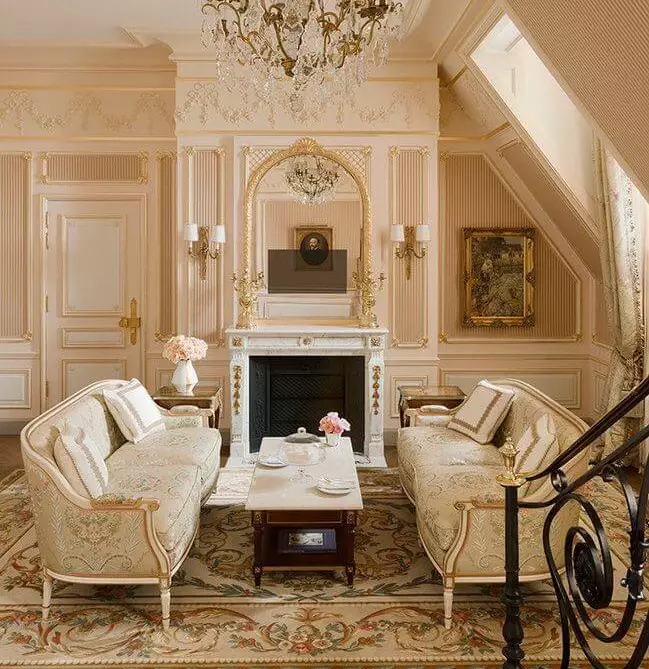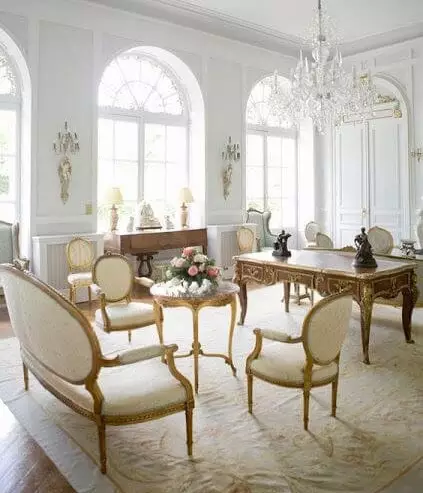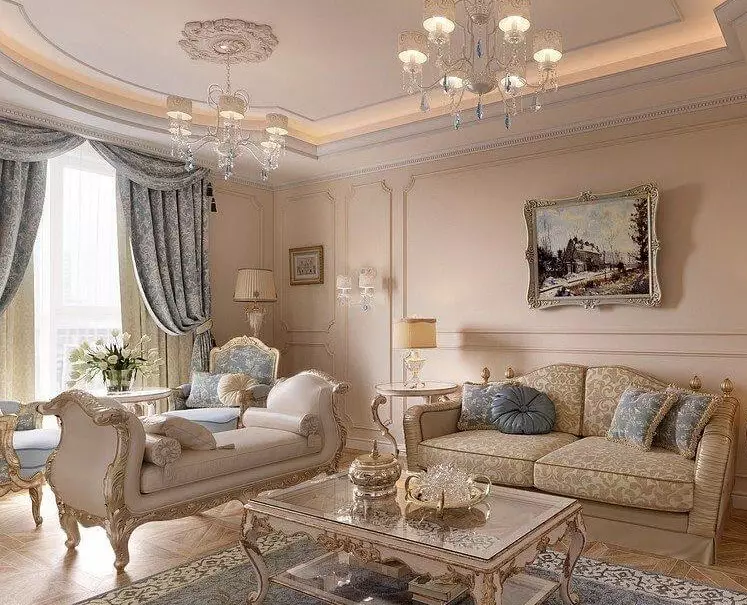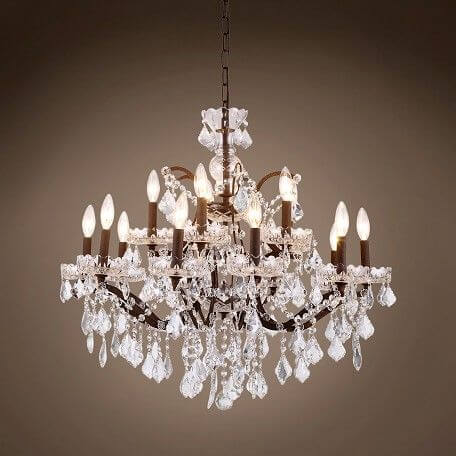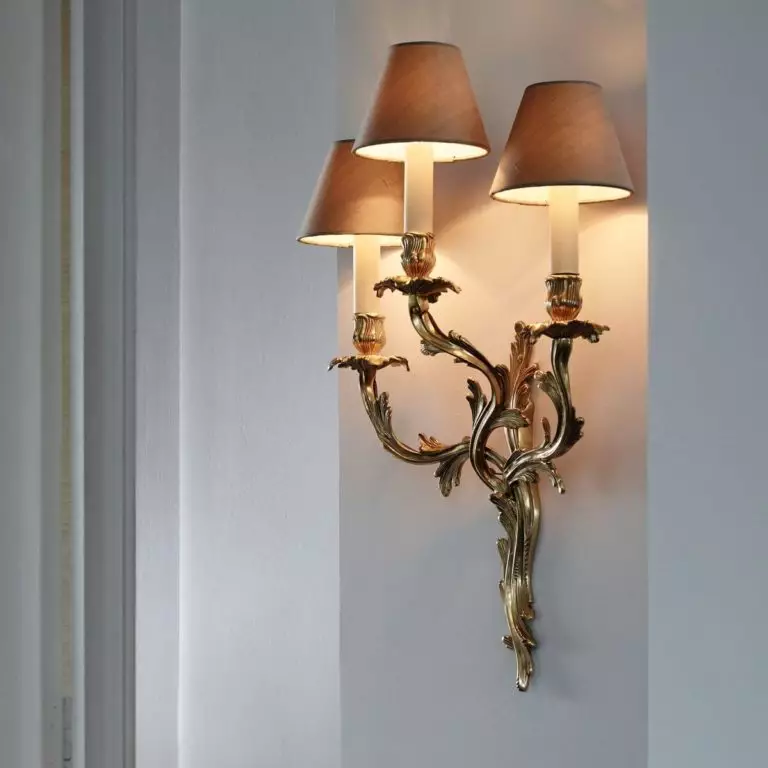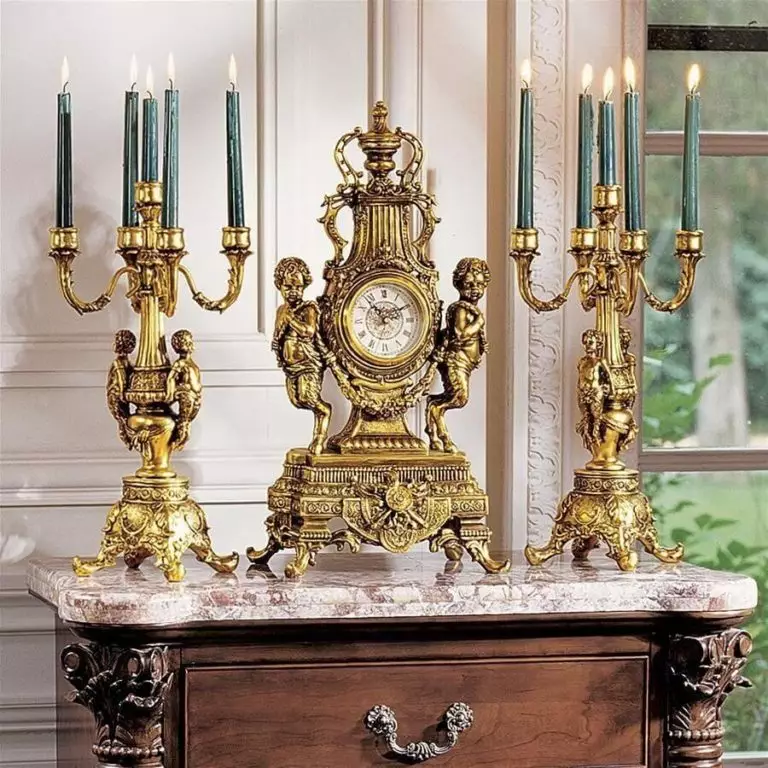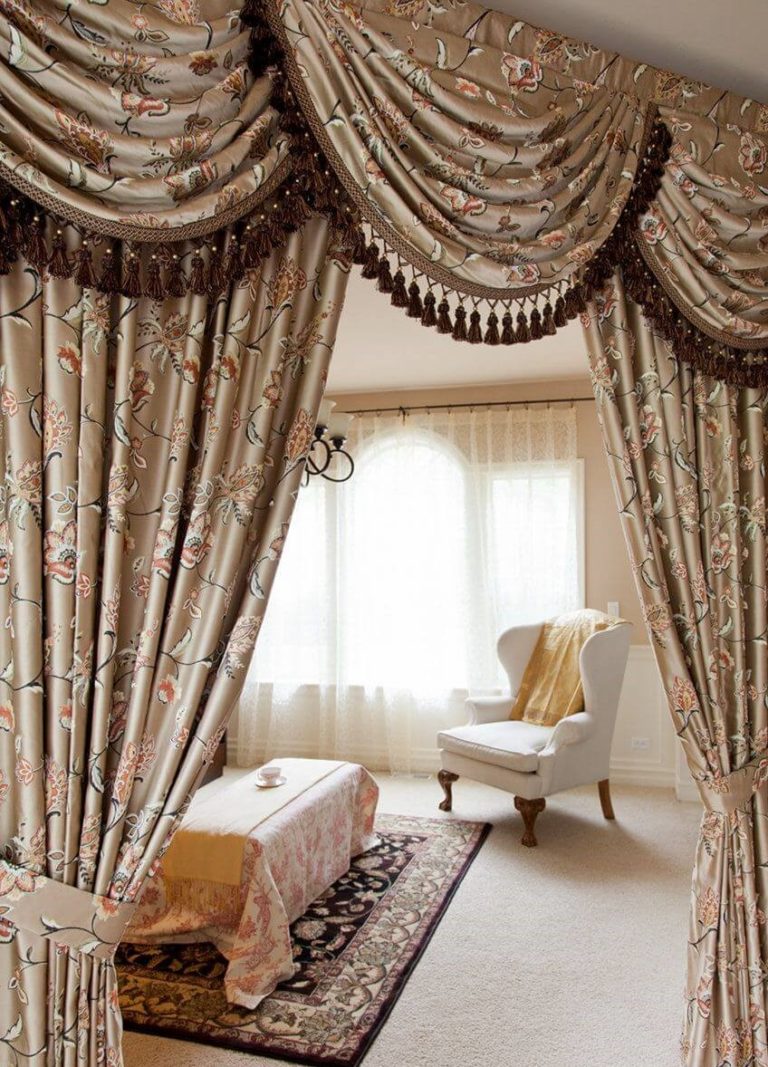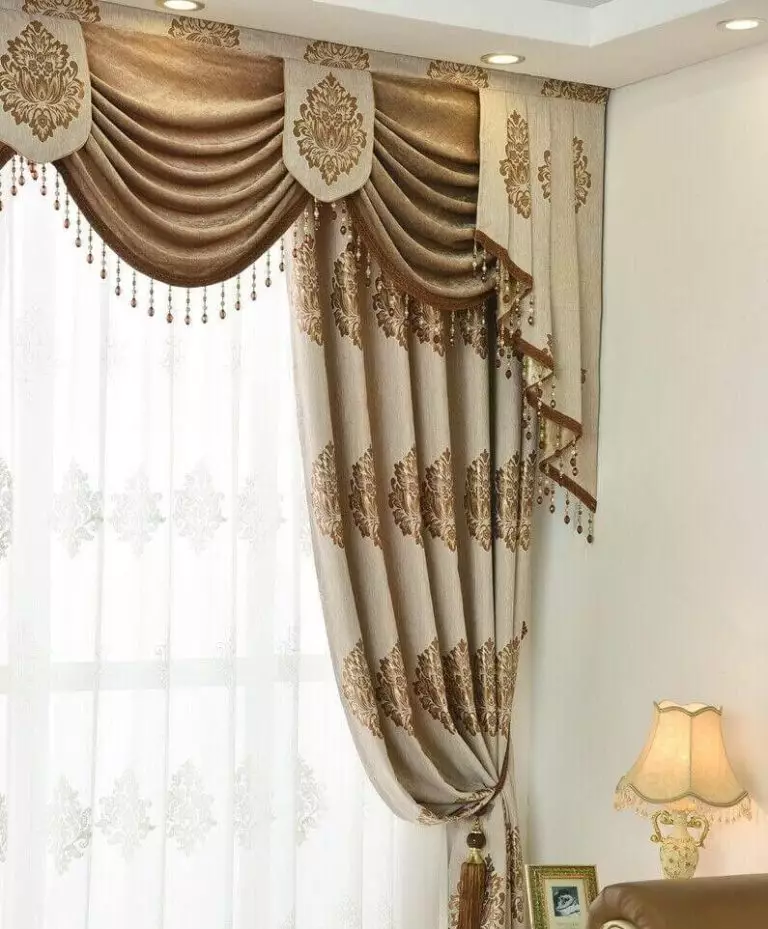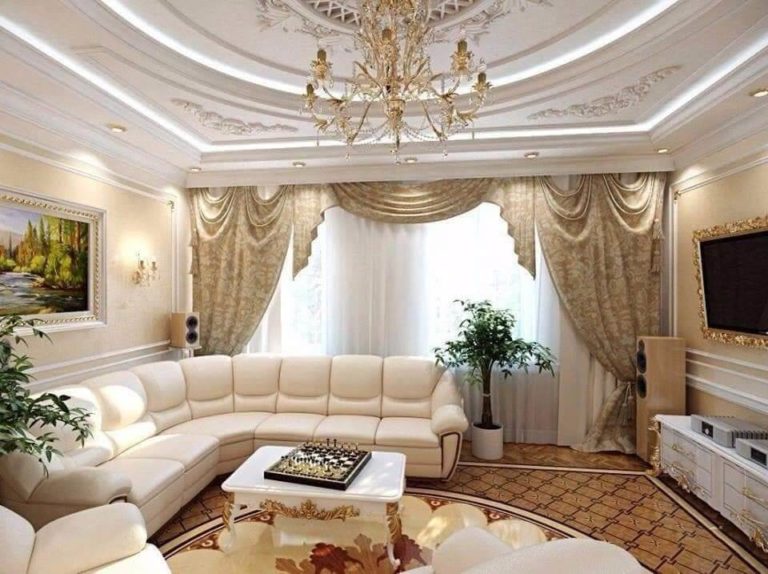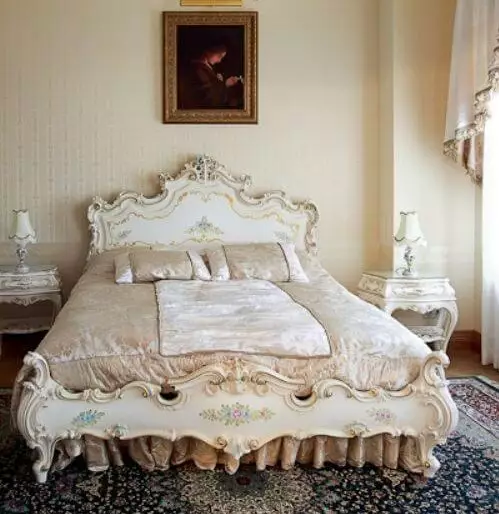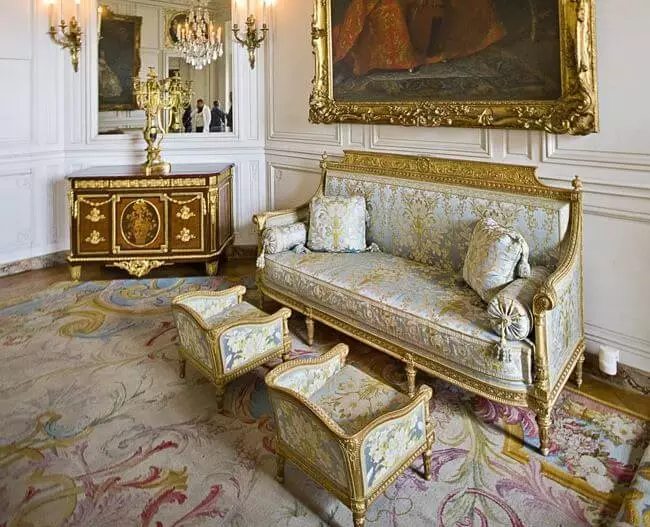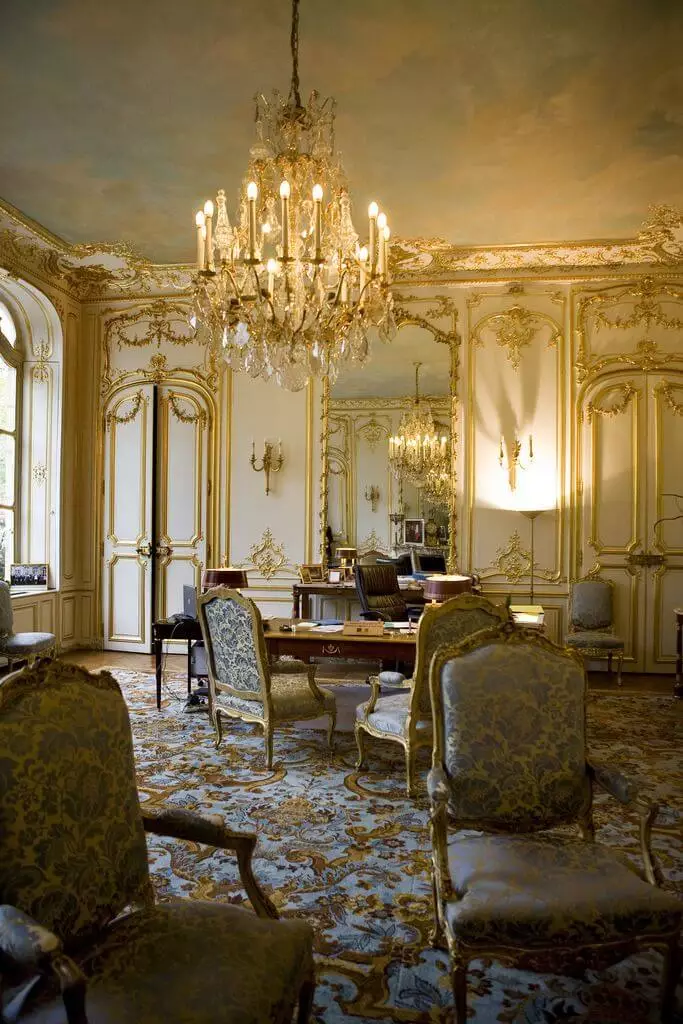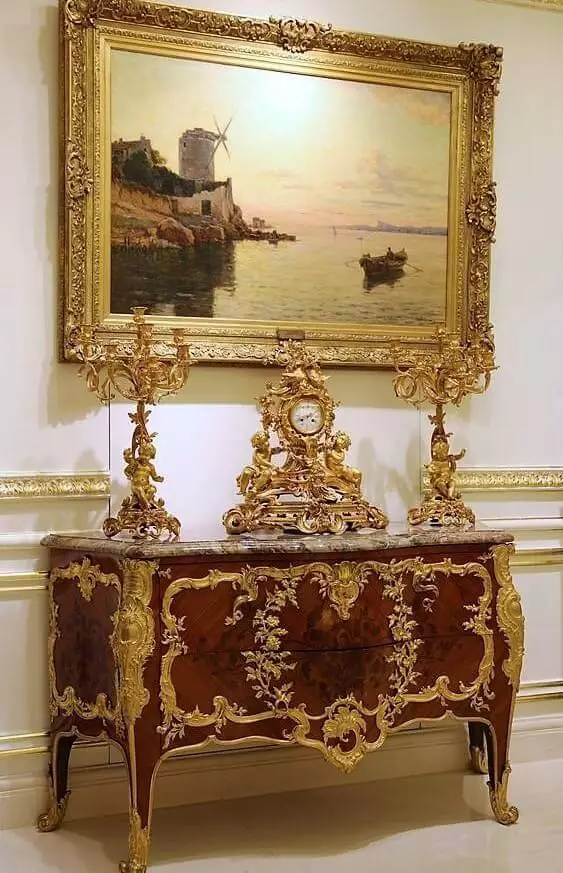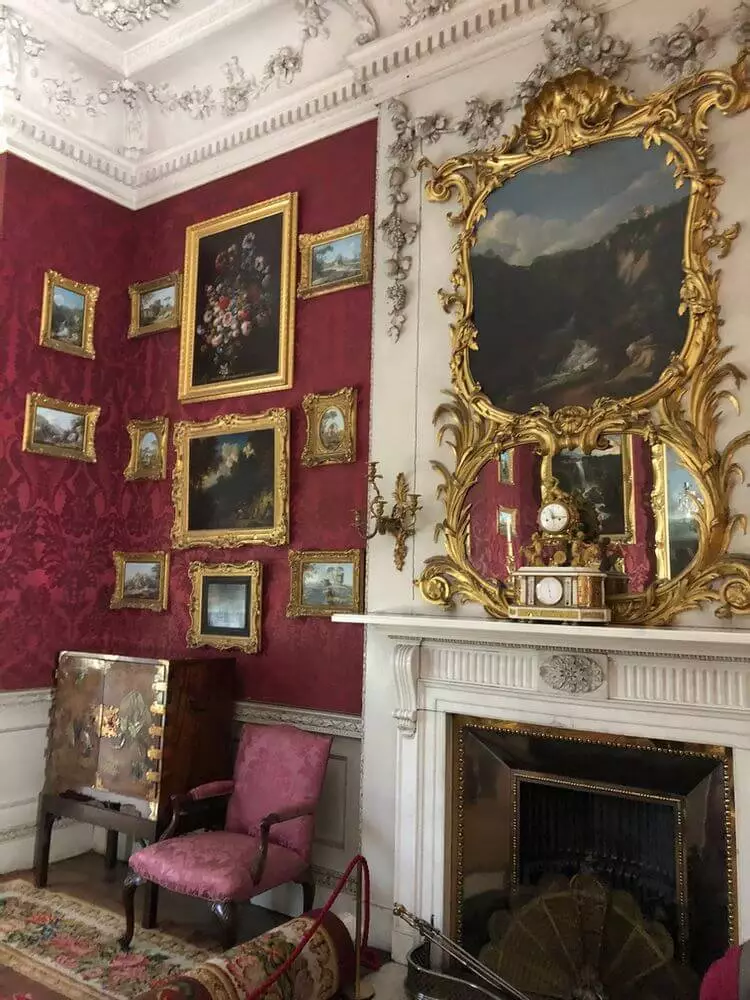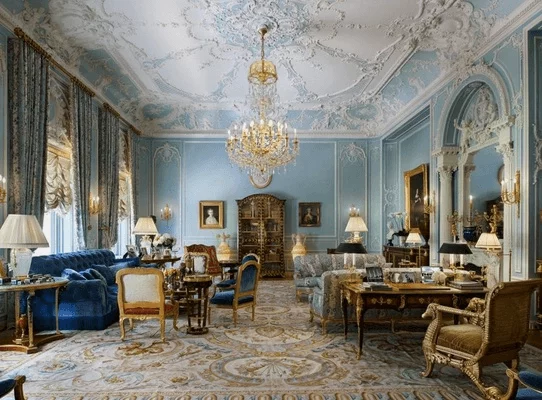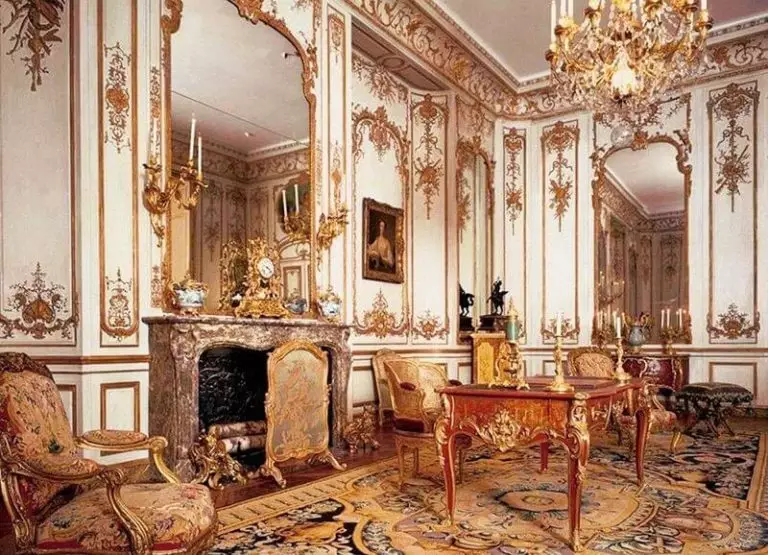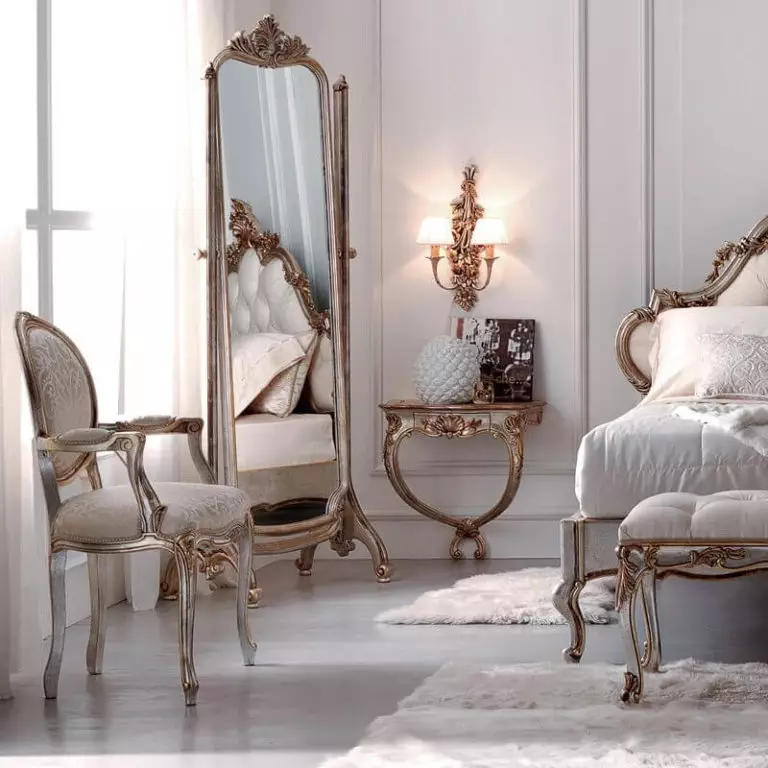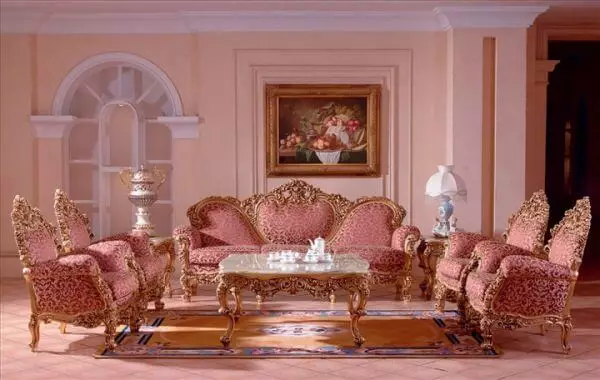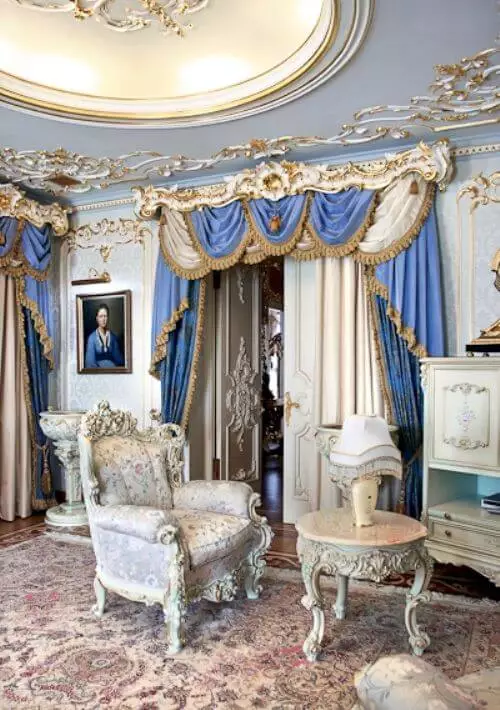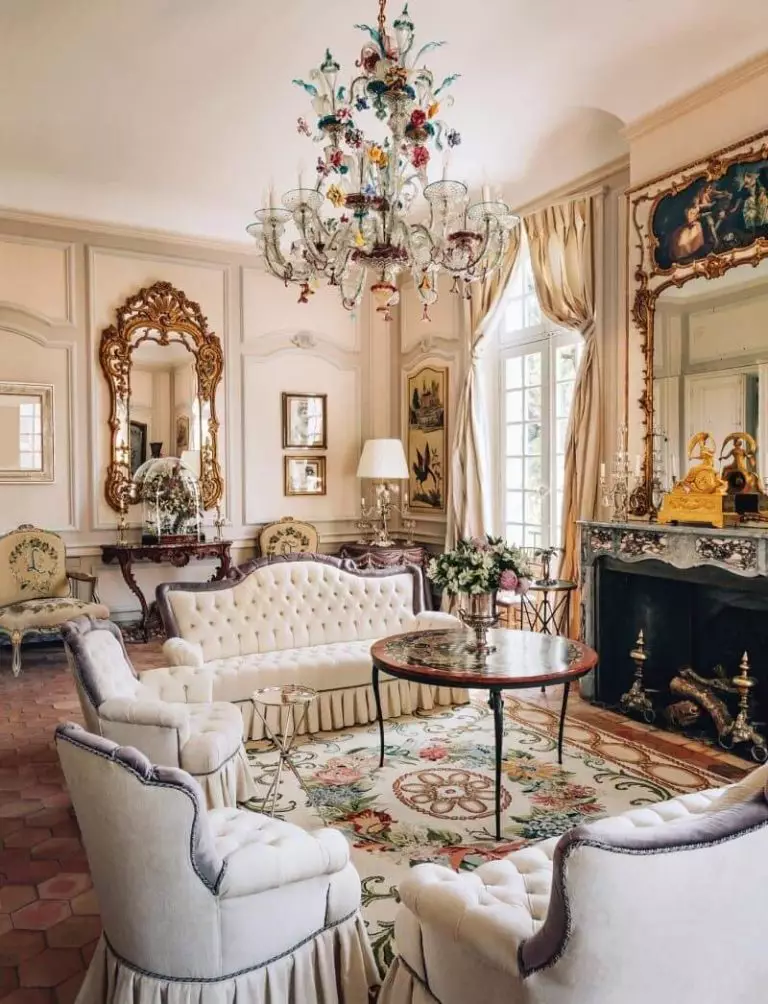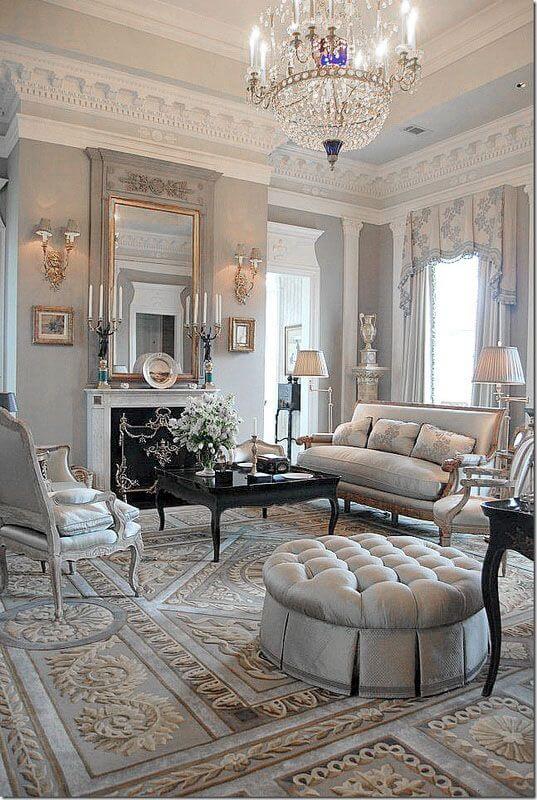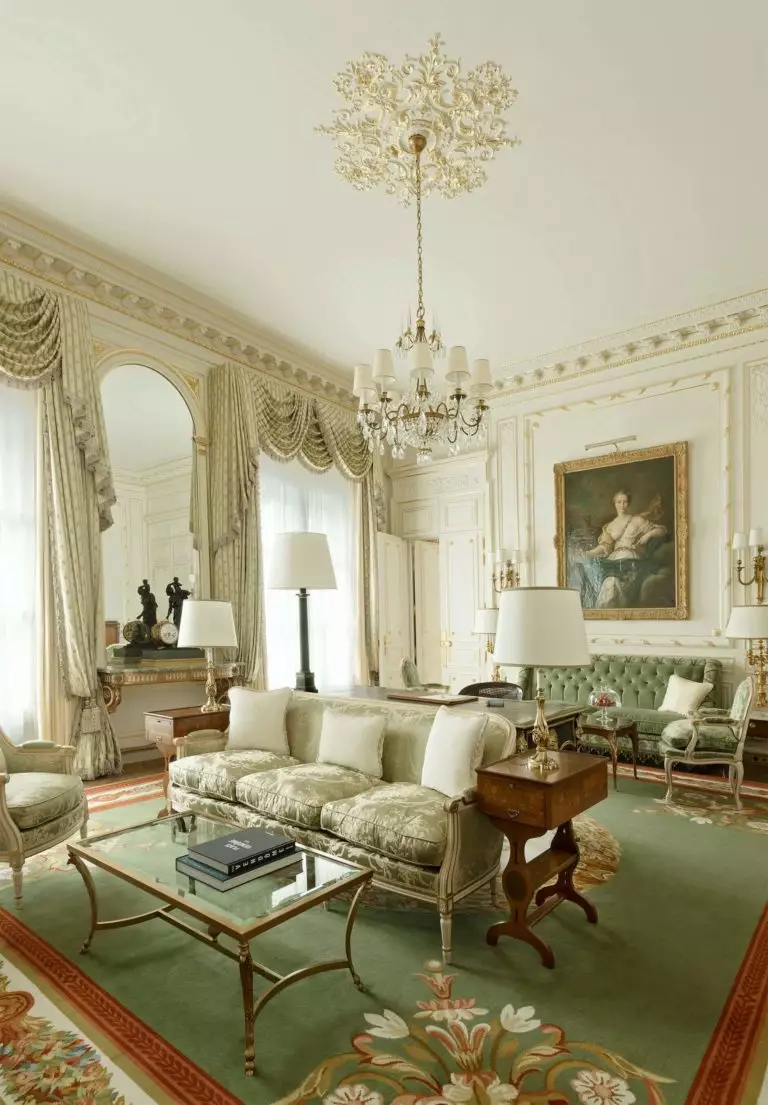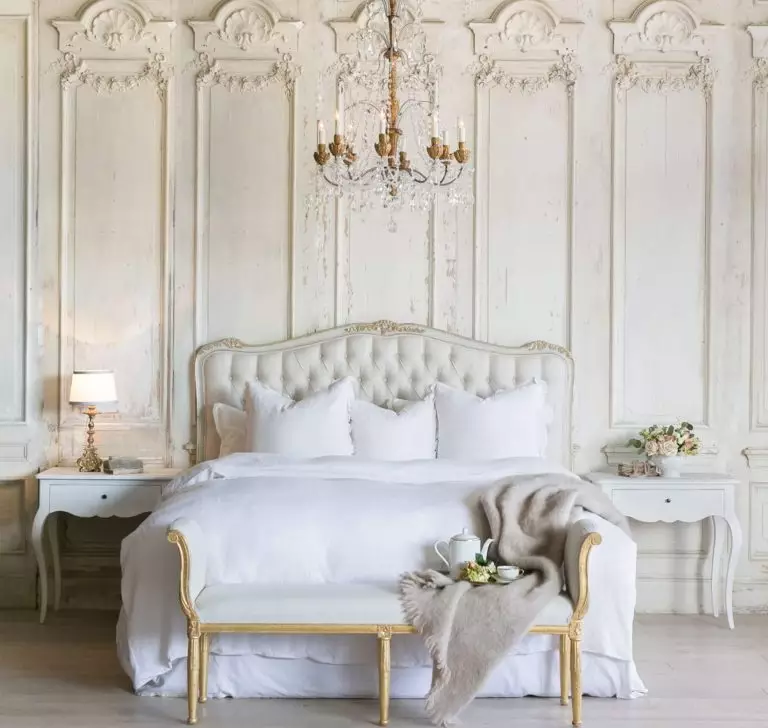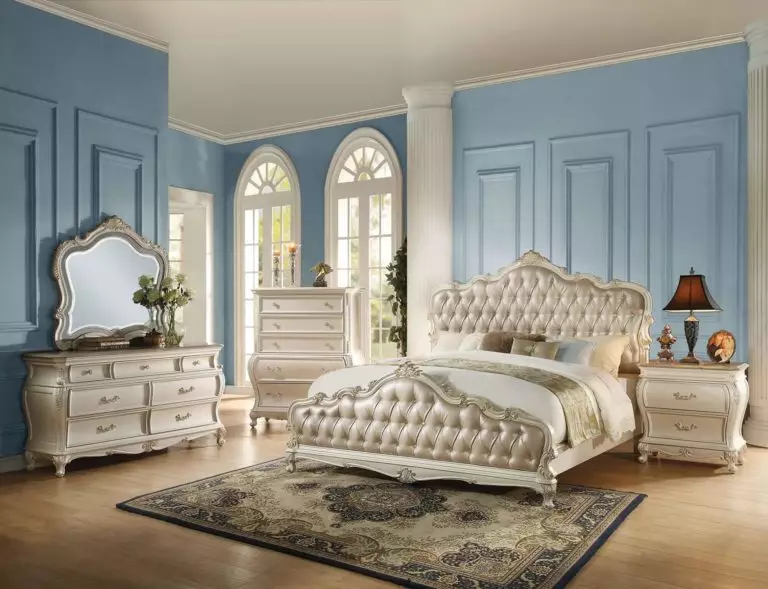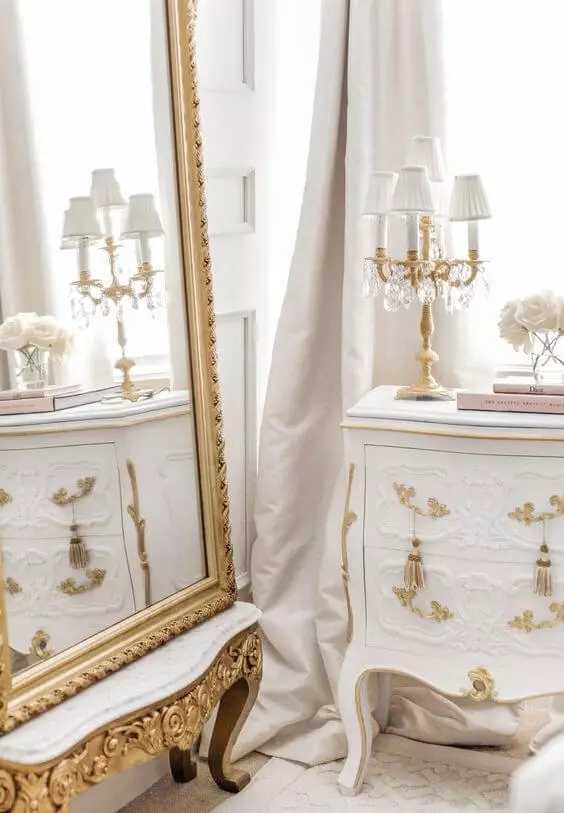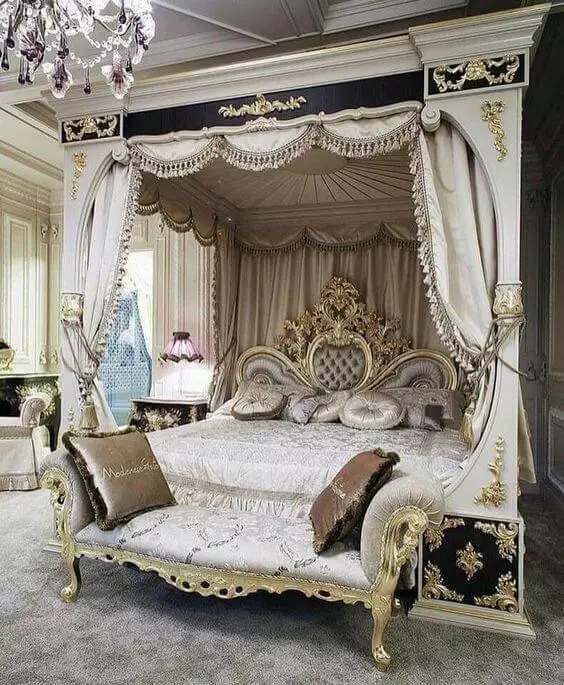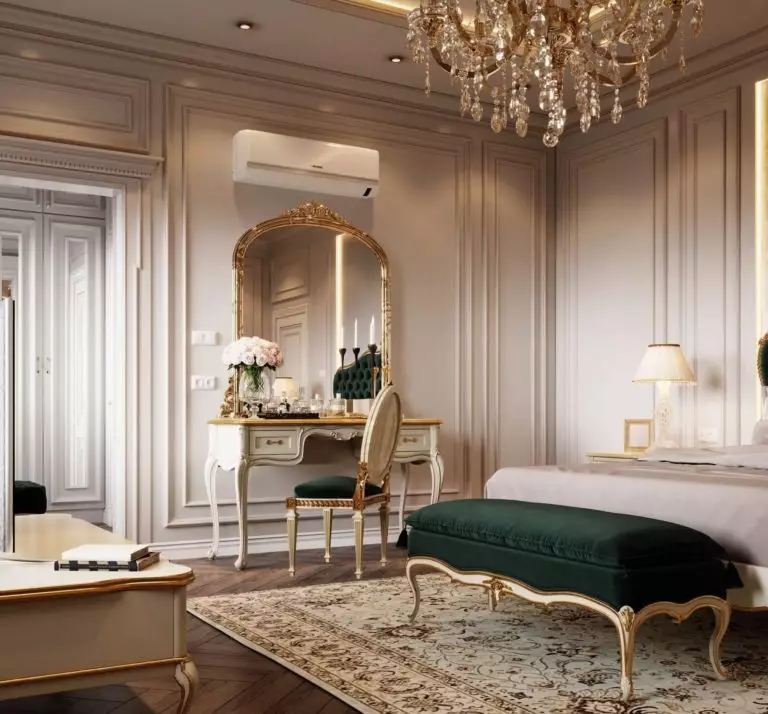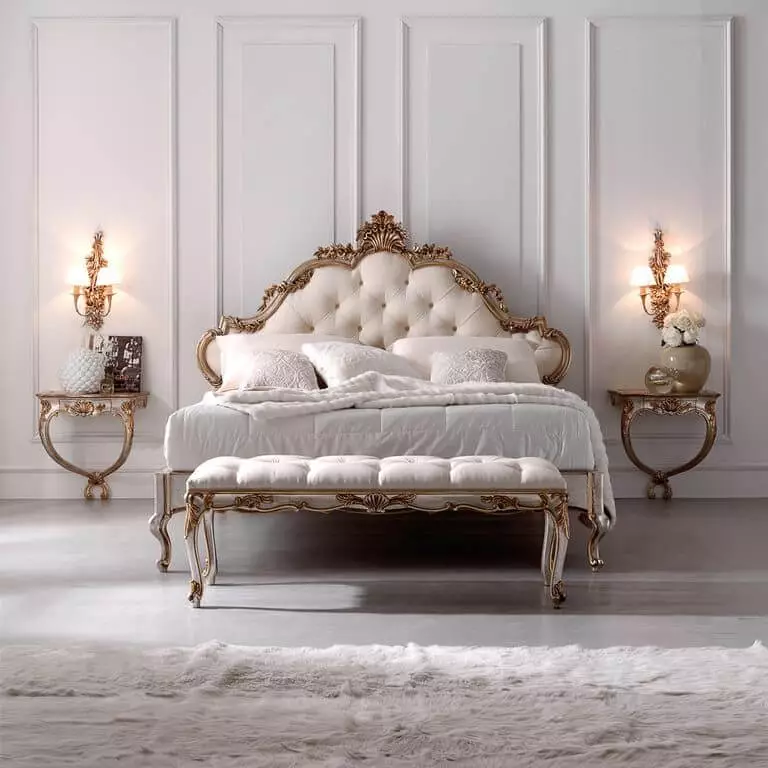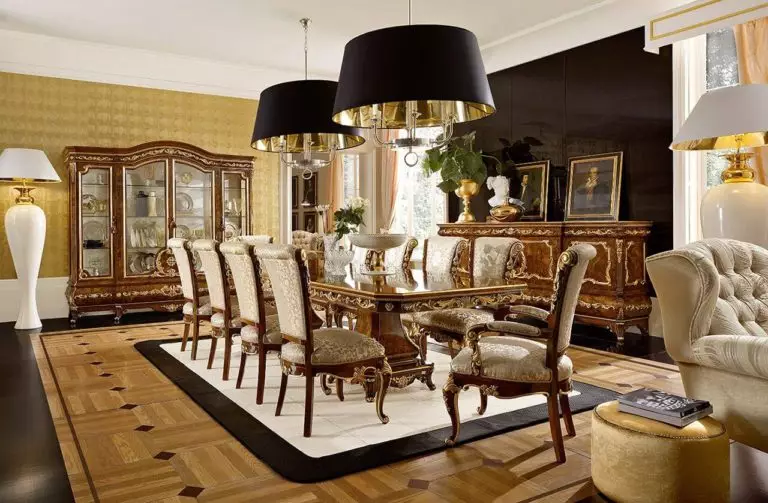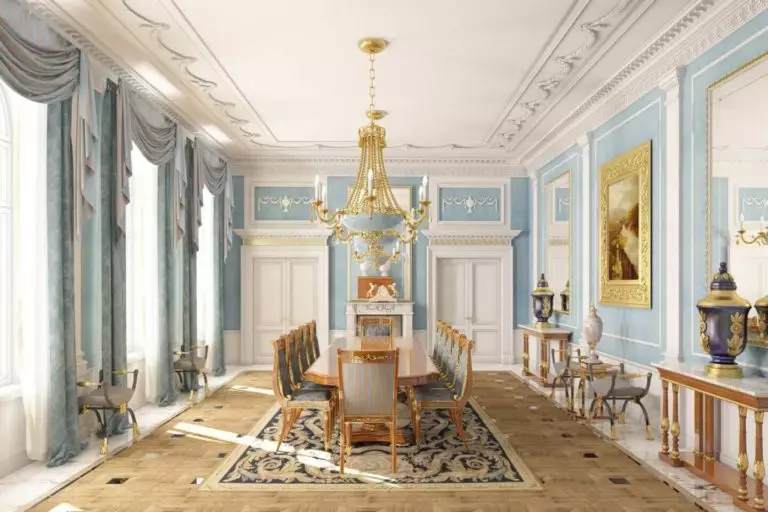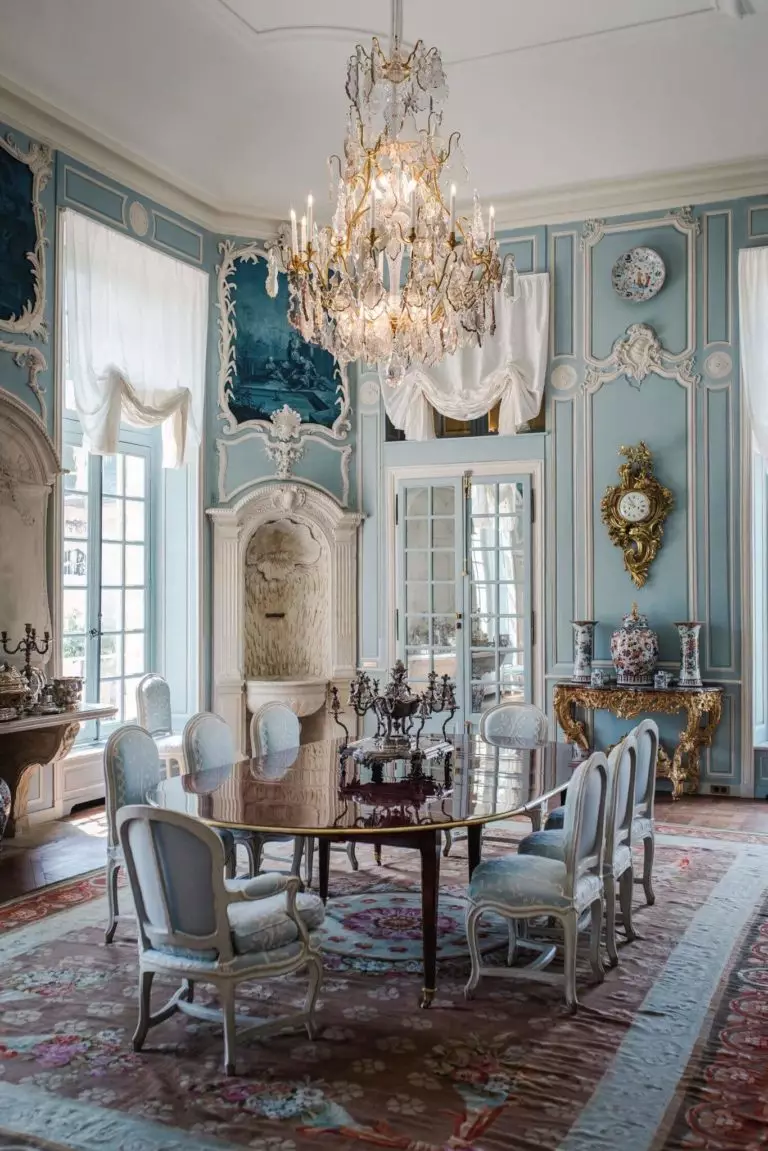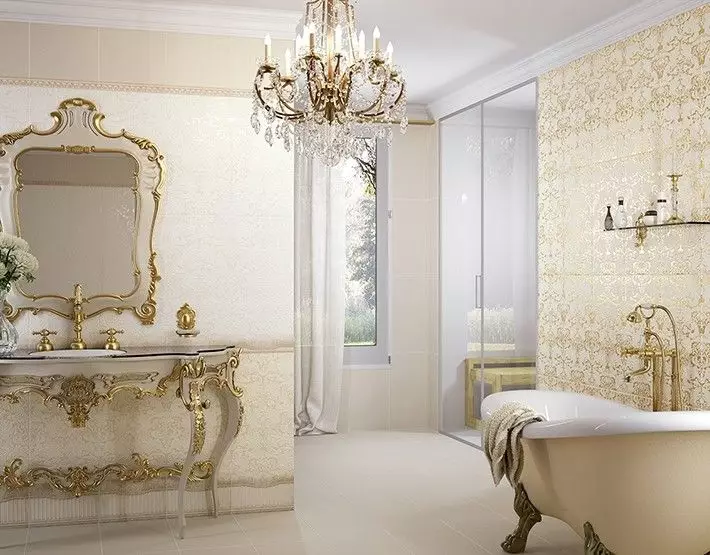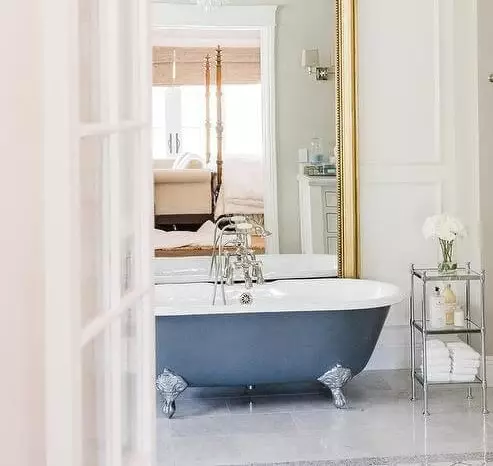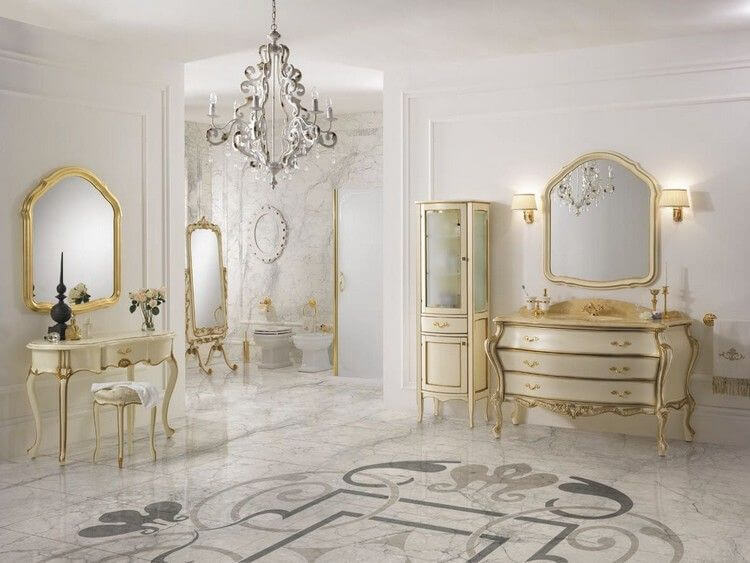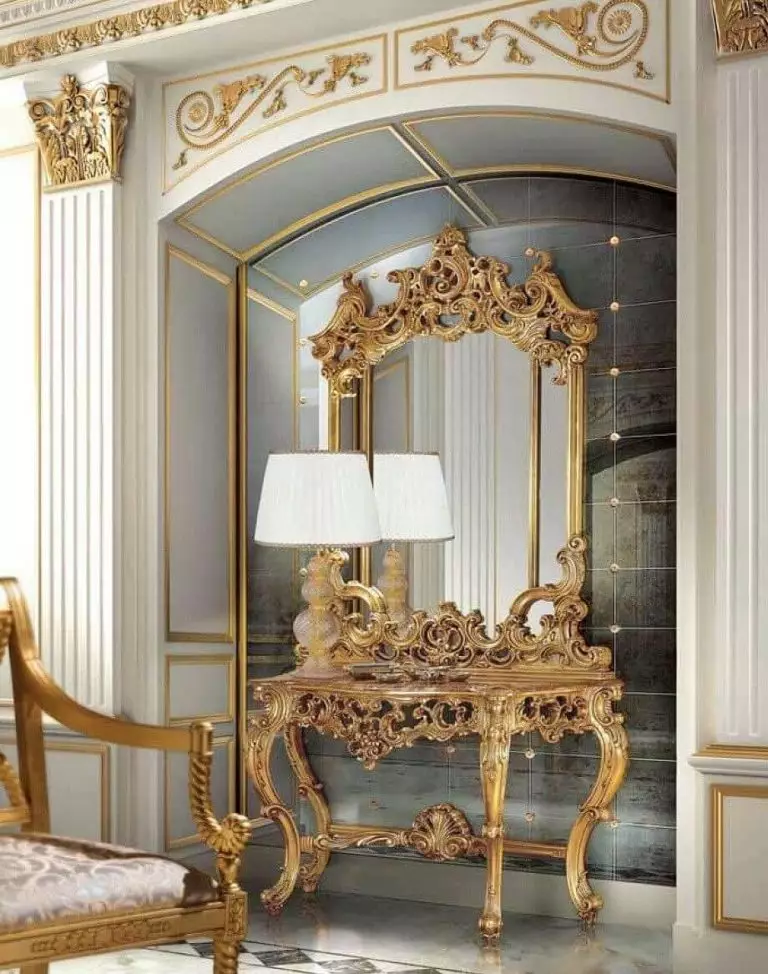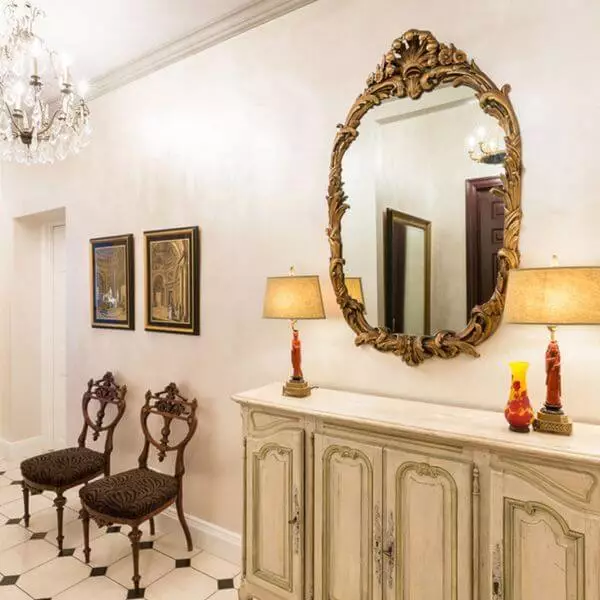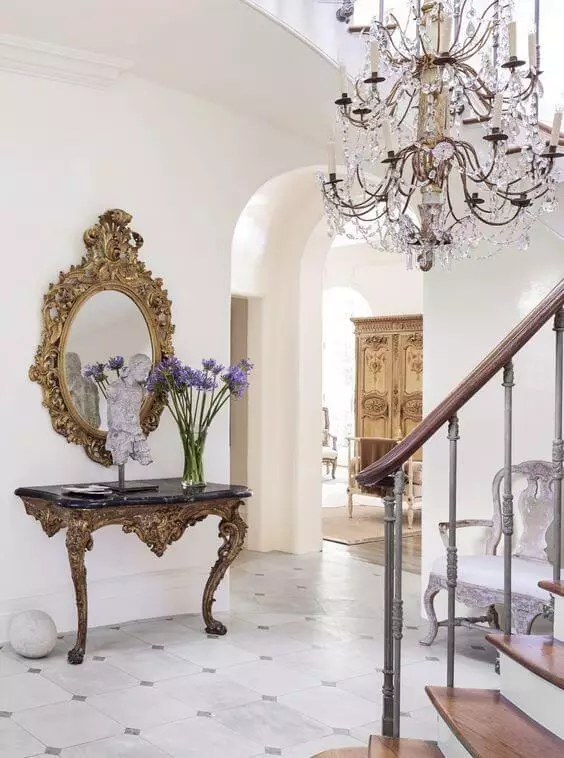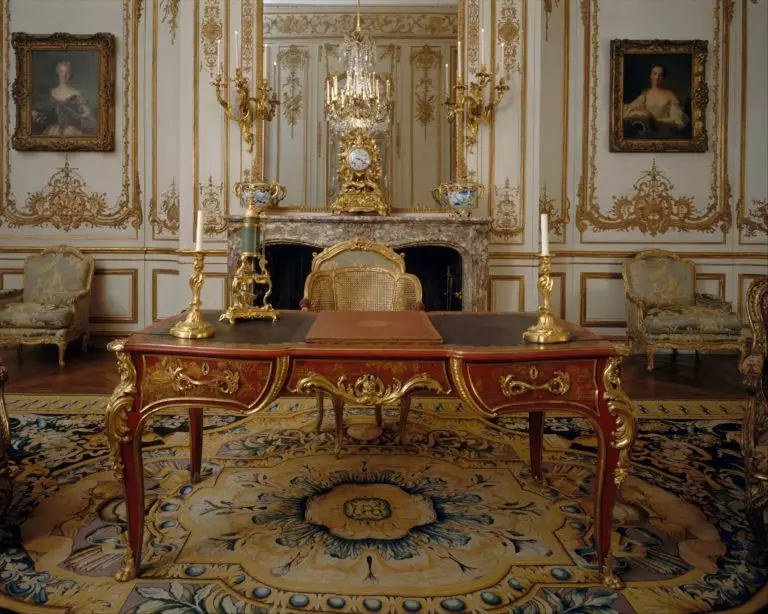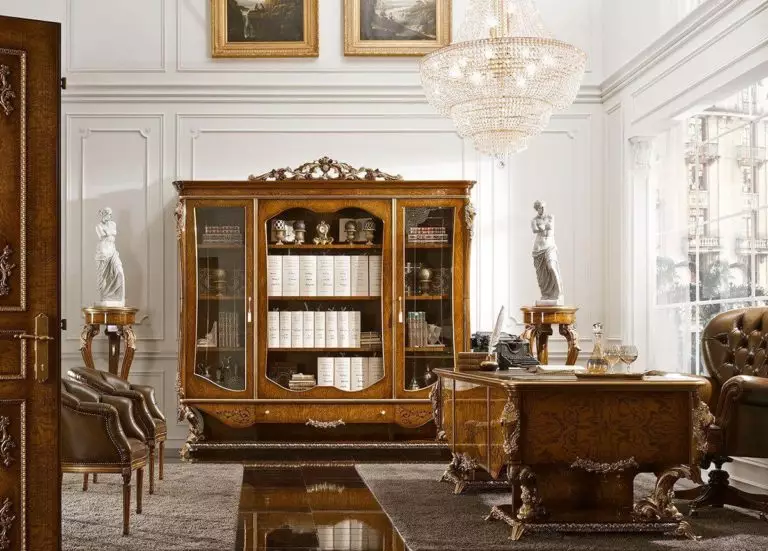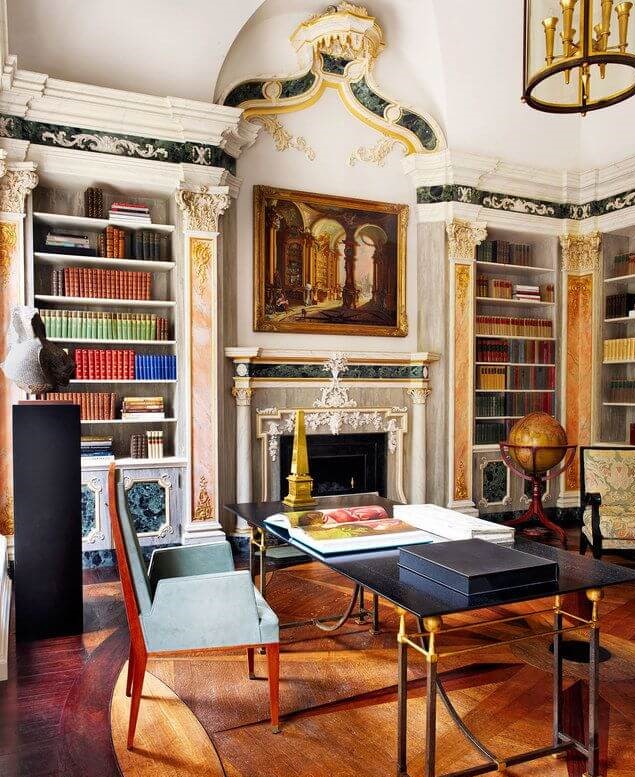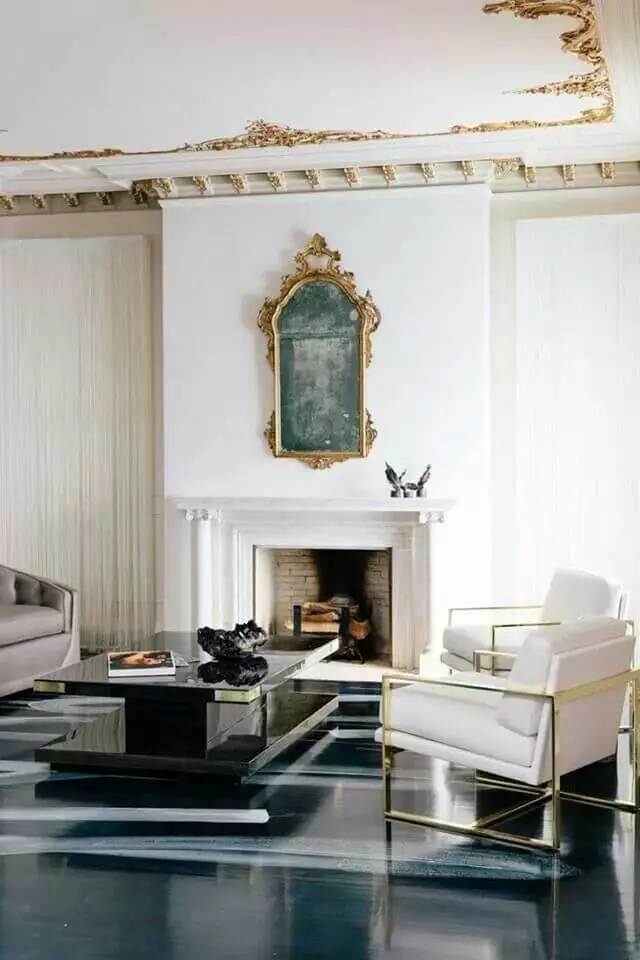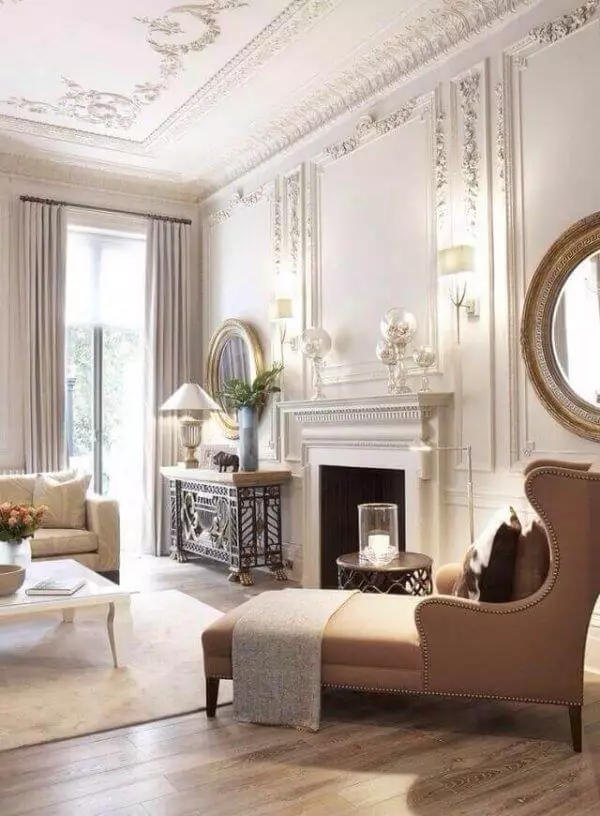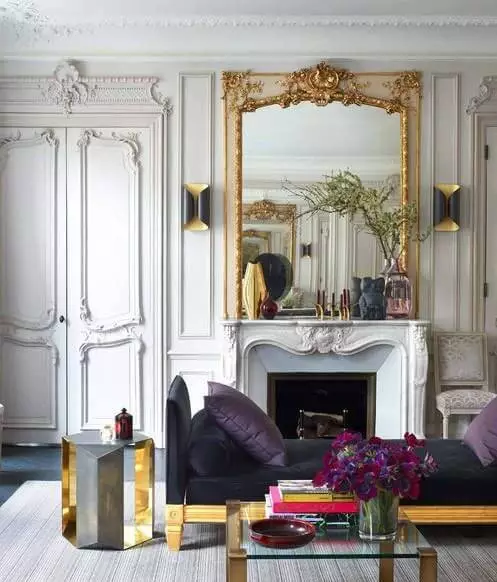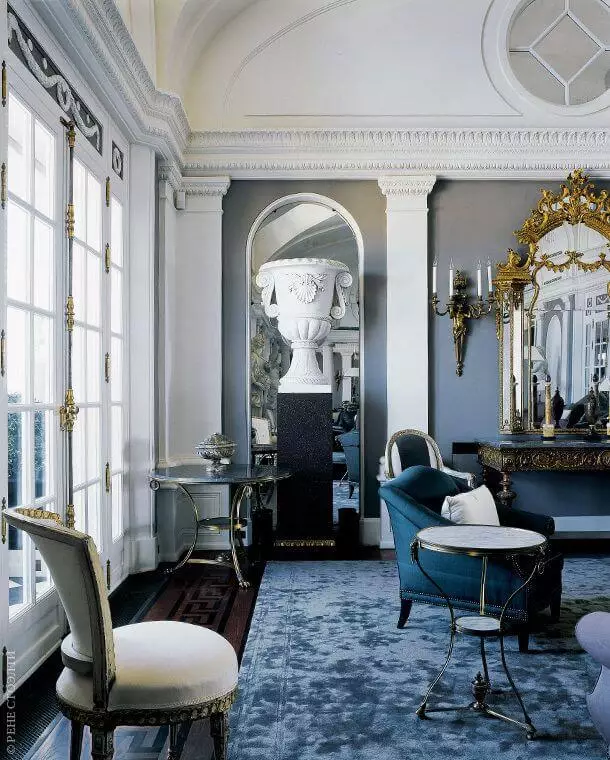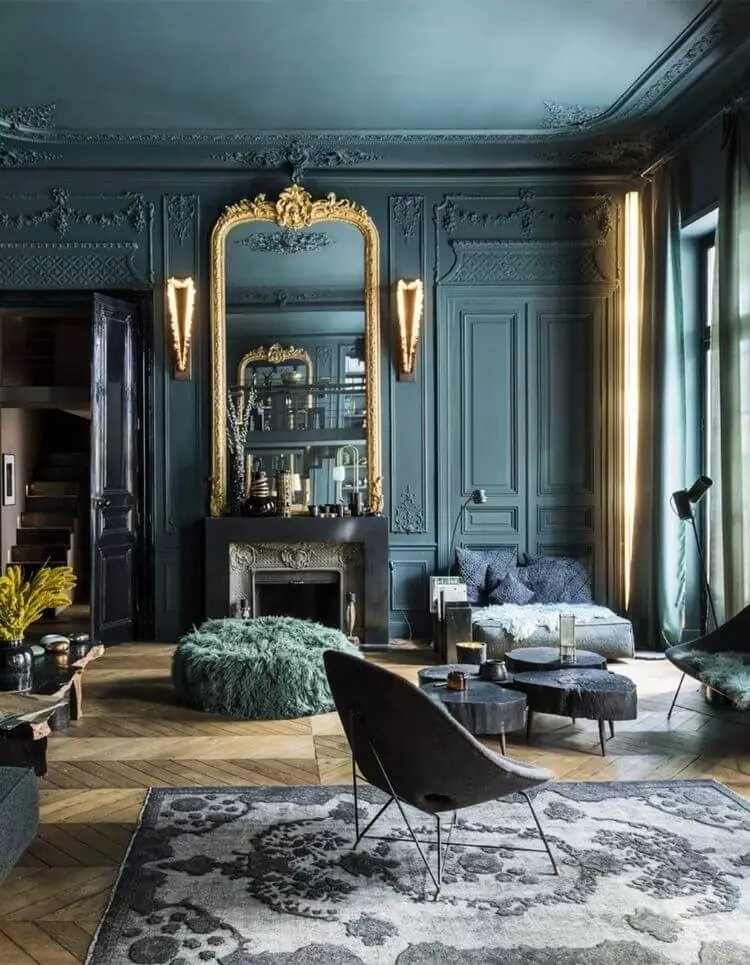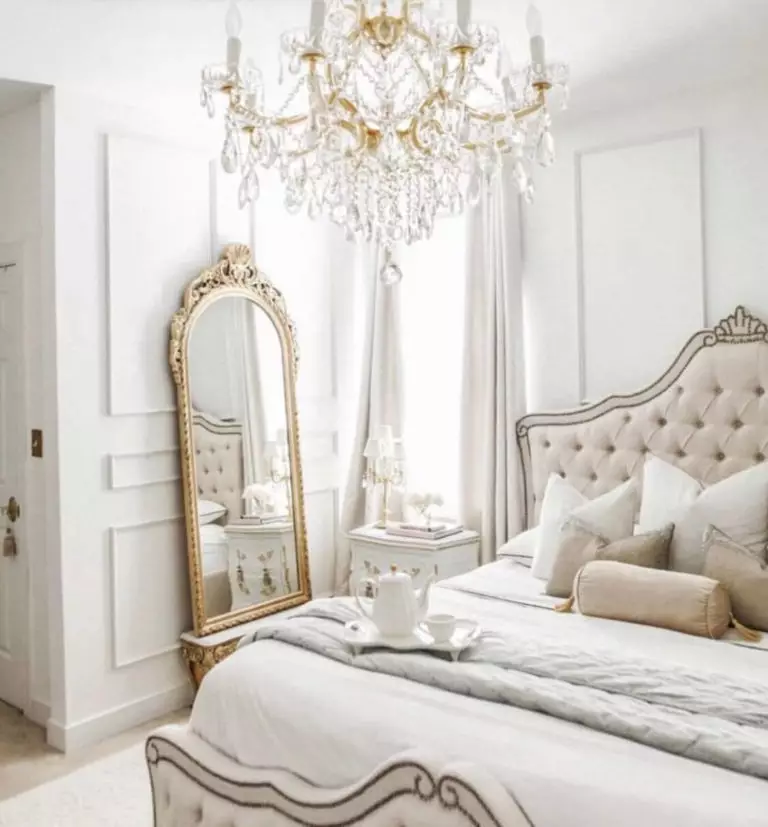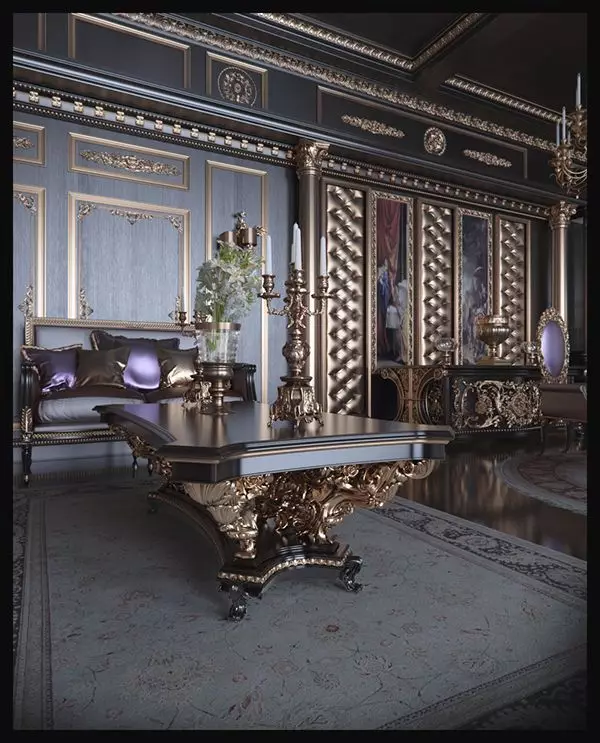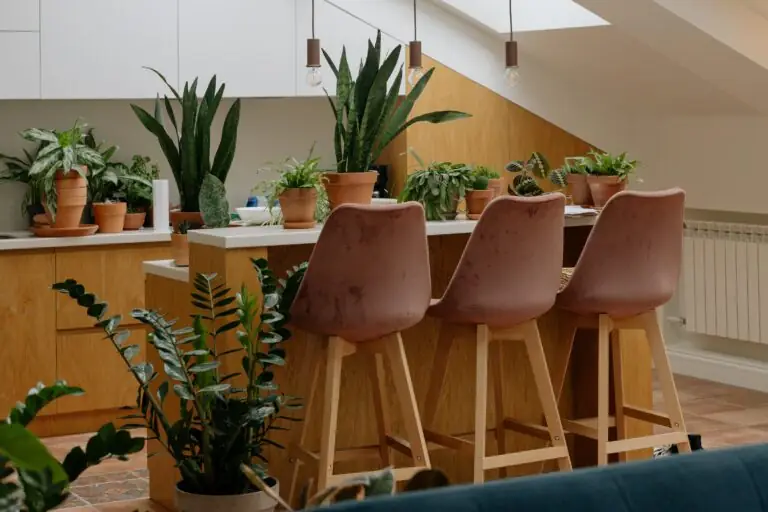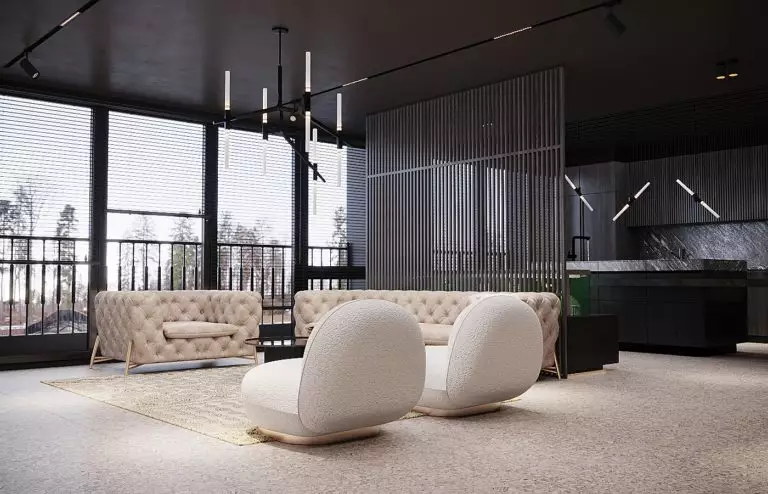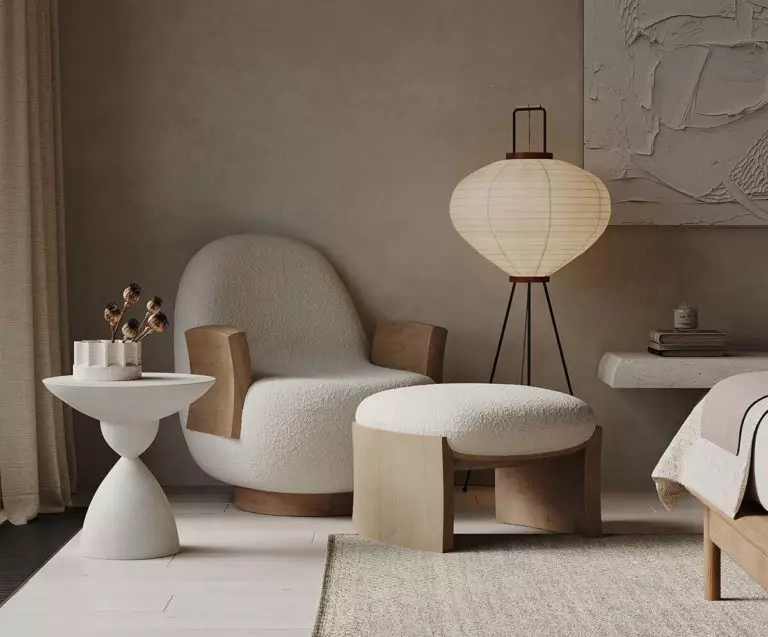Rococo style in interior design
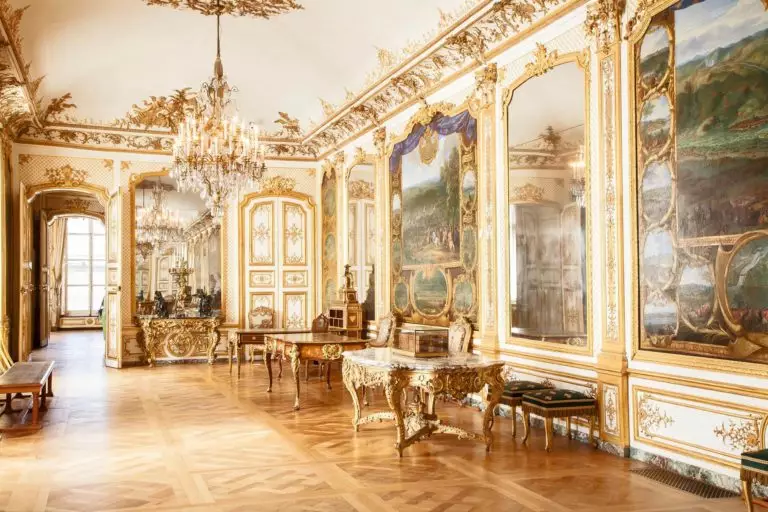
Luxury, grace, saturation with textured accents – as we know, today, all these trends are skipped in favor of greater functionality, restraint, and practicality. However, such circumstances do not mean that interior styles that imply chic, an abundance of decor, and maximum artistry are completely forgotten. They are still in the arsenal of designers and “shoot” in exclusive projects from time to time. Actually, this is what happened with such a style as Rococo.
Being one of the oldest styles, Rococo is still not forgotten today. Even without being at the peak of popularity, this trend in design continues to find its fans who are fascinated by its lightness, grace, and effortless luxury that becomes a valuable distinction between taste and pomp. Are you intrigued? Would you like to know more? Well, let’s talk about one of the most dramatic, cheerful, and mesmerizing styles in history!
What is Rococo style?
Rococo is often identified with the slightly more famous Baroque. It really seems to be a kind of continuation or offshoot of the “royal style”. However, it is significantly devoid of that solemn austerity and stunning splendor peculiar to French palaces. The very essence of Rococo was dictated by history itself.
The development of Rococo is associated with the era of the reign of King Louis XV, which was in the 1720-1770s. It was at that time that the French nobility actively rebuilt country mansions and elegant private houses in the city, arranging receptions, theme nights, carnivals, and holidays. Of course, the love for luxury and the willingness to keep pace with such a trend, particularly in the eyes of acquaintances, came into conflict with the impossibility of replicating the palace splendor in one’s house on the same scale. However, the aristocracy considered it worthy of striving for, marking the beginning of a style very similar to Baroque, but at the same time more graceful, light, and even flirty.
The abundance of exquisite flowing lines, whimsical curls and bizarre shapes demanded a specific name for this unique direction. Artists, sculptors, and architects of that time often used repetitions of bends characteristic of seashells, which, in turn, were in great demand in the design of fashionable grotto pavilions in palace parks. Thanks to them, the style received the name “rocaille” (from the French “rocaille”, which means shell), which later transformed into the familiar name of “rococo”.
You can apply wallpapers, paints, etc. on walls and see how they look in various interiors.
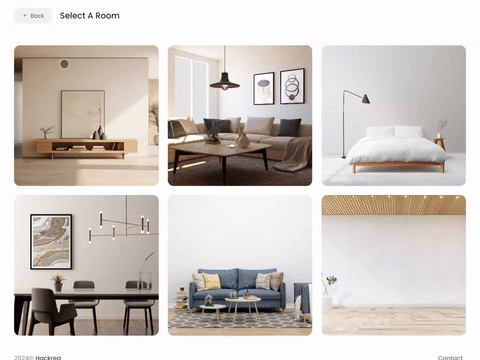
Fundamental principles and key elements
From a general perspective, Rococo may seem complex, unpredictable, and whimsical. Still, its integration in the interior is based on clear principles, which are much easier to follow than it seems. Let’s designate the most characteristic features of the style:
Colors and prints
As mentioned above, Rococo prefers light and delicate shades, which is why it is often called feminine. The following tones have become leading in the palette of this style:
Thanks to the combination of a pastel background and an abundance of elements of gold and bronze, the stay in Rococo rooms was often associated with flying through a gilded cloud – such interiors looked so light and at the same time luxurious.
Prints and patterns characteristic of this style are very whimsical and dynamic, and therefore often create a feeling of movement, a light whirlwind, or flow. It still retains the lush floral designs typical of the Baroque, floral motifs, sophisticated exotic buds, and aquarium fish, as well as spectacular ornaments borrowed from oriental cultures.
Finishing
As you have probably guessed, the design of the base surfaces in the Rococo-style interiors was also very effective. Moreover, thanks to it, these very basic surfaces turned into a completely independent element of decor with a certain artistic value. Of course, such solutions are somewhat adapted and simplified in contemporary design, and this aspect will be tackled as follows.
Walls
A special approach to the decoration of walls passed from Baroque to Rococo. The same can be said about the elevation of this process to the level of artistry. First of all, this, of course, concerned such an element as stucco molding, with the help of which piers and gaps were covered both between windows and above window openings. The stucco decoration often referred to abstract Baroque patterns, although it could well depict genre scenes.
In addition, the walls in such interiors most often differed in rounded corners and were divided into several zones with different decor options. So, it was appropriate to use the same stucco molding at the same time in combination with gold ornaments, carved panels, and painted frescoes. It was not uncommon to use silk fabrics and tapestry, which also covered the walls.
Ceiling
The first thing that draws attention to the Rococo style ceilings is, of course, stucco molding, stucco molding, and again stucco molding. There is not so much of it as in the grandiose palace halls in the Baroque spirit, but it is still present. At the same time, stucco patterns appear in the form of rosettes, diverge from the center with graceful beams of patterns, and overlap with no less luxurious embossed plinths.
Flooring
Everything is a little simpler with Rococo floors since they do not have an outstanding decorative function like ceilings or walls. They often involve using valuable wood or marble and rarely the decoration with a beautiful pattern.
Furniture
Rococo furnishing is a separate form of art. You can talk about it for a very long time (which is, by the way, a real pleasure), and we are not going to get you bored, but reveal the key features of this amazing style in the form of a list:
Another feature of Rococo furniture, which we talked about above, is the use of a fairly extensive set of furnishings for any room. Therefore, cozy, inviting, and sophisticated sofas and armchairs in the living room necessarily coexist with consoles and a variety of accent tables. The splendor of the bed in the bedroom is complemented by banquettes, ottomans, and flirty coffee tables. In the dining room, you simply cannot do without an elegant sideboard or delicate showcase.
Lighting
Rococo lighting scenarios are a story of splendor and celebration. There is enough luxury and pretentiousness here, but everything is smoothed out by elegance and the grace of lines. The key element is, of course, the chandelier – huge, crystal, elegant, with an abundance of pendants and lamps. It is complemented by sconces in the same style and exquisite candelabra with many candles. As for floor lamps, these are practically not used, and in the bedrooms, it is quite possible to find table lamps – however, not as often as in the same classic style.
Textiles
Rococo is distinguished by a sufficient number of textile elements. Furniture upholstery, tapestries on the walls, curtains, and lambrequins laid with spectacular folds, canopies over the bed provide a feeling of coziness and, at the same time, are featured by a luxurious texture.
The most appropriate materials, in this case, are silk and satin, tapestry fabric, a little less often – velour and velvet – both monochromatic and with floral patterns. However, the fabric with a chinoiserie pattern is of particular interest – with flirty floral patterns and frivolous pastoral motifs that give the interior an even more relaxed and positive mood.
Decor
This amazing style is often called unpredictable and feminine, particularly because of the incredible decorative variety. Charming knick-knacks and interior decorations are present everywhere – on numerous consoles, dressers, and sideboards, as well as on the shelves above the fireplace, which is an indispensable element of the Rococo interior, and on accent tables.
It should be noted that there are not so many massive and dimensional elements here. Thus, statues characteristic of the Baroque are replaced by busts. Floor vases are more graceful and elongated upward. The rest of the decor is lighter and represented by an abundance of mirrors in which the chandelier lights are effectively reflected, table clocks, luxurious candelabra, paintings, porcelain and bronze figurines and caskets from rosewood.
As for indoor plants, they are almost never found in Rococo interiors. Their absence is most likely explained by the fact that the French nobility had their own gardens and parks where you could walk at any time, so there was no need to take care of them at home as well. But lush bouquets of fresh flowers in crystal vases for this style can be safely considered a kind of must-have.
Rococo style in various rooms
The Rococo style can be adapted to almost any room – as long as it is spacious enough. Let’s take a closer look at the arrangement of each of them!
Living room
In the old days, the living room (or salon) was the central element of the house, a place where guests were received and balls and parties were held. That is why it was decorated in the most effective and festive way, which is reflected in the modern interpretation of the style. White walls with stucco and gilded decor, a huge but elegant and cozy sofa with the same armchairs, a table on whimsically curved legs, a couple of accent tables or consoles, a fireplace, and a chic chandelier are the main elements of the living room. If your room has a TV, decorate it with a golden baguette so it will not seem like it does not belong to this space.
As for textiles, pay attention to heavy draperies with rich decoration – tassels and lambrequins. A carpet with a colorful oriental pattern should be laid on the floor, which will add comfort and provide a harmonious separation of the seating area.
Bedroom
Even today, a Rococo bedroom can hardly be called a bedroom – the word “boudoir” is more suitable for it. The centerpiece is, of course, the bed with a high and luxurious headboard and footboard – perhaps even under a canopy. The picture is complemented by a wardrobe with carved decor on curved legs, a dressing table, a small elegant chest of drawers, a couple of banquets or ottomans, and, possibly, an elegant armchair. Refined lighting is provided by a chandelier and a pair of wall lamps, less often table lamps.
Dining room
Rococo is not at all about functionality and practicality. Therefore kitchens in this style are extremely rare. However, it may be used in houses with separate dining rooms. Distinctive features of this design are a huge dining table made of wood with a lot of decorative elements, comfortable soft chairs with luxurious finishes, an elegant sideboard or showcase, and a soft carpet on the floor. Walls also need decorations: stucco and paintings in lush gilded frames are the most popular options in this situation.
Bathroom
You would definitely want to stay longer in a bathroom decorated and furnished in the Rococo style since it is so cozy and chic there. A traditional deep bathtub on spectacularly decorated legs invites you, again and again, to immerse yourself in warm foam. The gilded taps and showerhead bring you into the atmosphere of a wealthy home from two centuries ago, and a dressing table with an illuminated crystal sconce mirror adds even more bliss and aesthetics to your personal care procedures. Graceful draperies on the windows, tiles with patterns on the floor – such a magnificent interpretation of functionality is characteristic only of Rococo.
Hallway
When you enter a hall in a similar style, you immediately understand: people with taste and sources live here. The most typical version of the Rococo-style hallway has tiled or marble floors, spectacular lighting, and an elegant console with drawers. Do not forget about the mirror and the wide comfortable bench upholstered in velour or satin. As far as the palette goes, pinks, beige and white are perfect choices.
Home office
In a Rococo-style home office, you would hardly want to deal with startups or lead IT projects. As for everything else, however, its interior could well be inspiring. Most importantly, do not forget about the basic principles of Rococo – grace and lightness. An elegant but not massive table with exquisite decor, a comfortable armchair with a sophisticated finish, airy draperies on the windows, and delightful trinkets on glazed shelves – such a home office will delight particularly women.
Modern Rococo
Today it is almost impossible to convey the sophistication and splendor of the “palace chamber style” in the most authentic way. It is not because most of the houses and apartments today are not as spacious as the mansions of the French nobility, but the lack of approaches and materials. It is unlikely that you will order natural Carrara marble and mahogany parquet flooring, wait for cabinet makers to make you a personalized set, and opt for plaster stucco molding, which takes a long time to implement, is dreary and impractical.
However, all this does not mean that Rococo cannot be adapted to modern realities. An interior in a similar style can be created today if you use the designers’ advice:
Rococo style: is it trendy now?
Like other styles that imply clear attraction towards scale, luxury, and hedonism, Rococo is in the shadows today, and you can hardly say that it is popular. However, even today many people are very much in love with its graceful, whimsical, and flirty features. Therefore it is implemented within exclusive design projects for individual houses and apartments.
Why should you try this style?
First of all, this style will appeal to cheerful people in love with art. If you can feel the lack of positive and bright events, Rococo will be a great opportunity to surround yourself with comfort and grace. Refined, filled with shapes and textures, a little illusory but so fascinating, it allows you to live in constant anticipation of pleasant events and the expectation of something special – and inspires positive in all its manifestations.
Who is Rococo suitable for?
The choice in favor of Rococo will be quite a reasonable decision in the following cases:
Rococo style in different countries
We have already talked about modern Rococo and the possibilities of its implementation in a modern interior. Despite the small circle of true connoisseurs, “rocaille” is well known in a number of European countries, and in each has, albeit small, but very interesting differences. However, first things first.
France
As this country is the birthplace of this style, it is here that it appears before enthusiastic connoisseurs in all its graceful and luxurious authenticity. Spectacular finishes, charming and whimsical furnishings, an abundance of light and gentle tones, maximum attention to the decor – it seems that the era of holidays, entertainment, and carelessness comes to life again within the walls of such a house or apartment.
England
English Rococo is more orderly and restrained in decor. Here much less stucco is used, a maximum of two solutions are chosen for wall decoration, and the paints are a little richer and deeper. So, coral and brighter pistachio are often found here. Also, one cannot fail to note the smaller number of carved elements of furniture, and the predominance of painting in comparison with other decorative elements.
Germany
In German castles and modern mansions, Rococo has a greater solemnity and is much closer to its “ancestor” – Baroque. Darker and more expressive tones are more common – azure, malachite, scarlet, fuchsia. There is more gloss in the decoration, and the design of the floor is more original: parquet is laid with intricate geometric patterns and tiles – in a checkerboard pattern or with a beautiful flowing pattern.
Spain
What Spanish Rococo fans have been really in love with at all times is floral ornaments: their number in the interior is astonishing. The walls are like out of a fairytale forest due to the abundance of patterns, spectacular patterns on parquet floors, and reddish wood furniture.
Italy
Italian Rococo is a delight for the eyes of a real esthete. It has much less whimsy and pretentiousness and more true grace. It likes dim lighting and is not so keen on gold and stucco, while the surprisingly smooth furniture shapes impress with their relaxing and mesmerizing features.
The Rococo style embodies the flirty sparkle, chic, and sophistication with unconditional notes of romanticism and sensuality. An exquisite ornamental rhythm, an elegant interpretation of personal comfort and coziness, an atmosphere of lightness and celebration – it contains everything that our crazy, dynamic, and rational world sometimes lacks.
